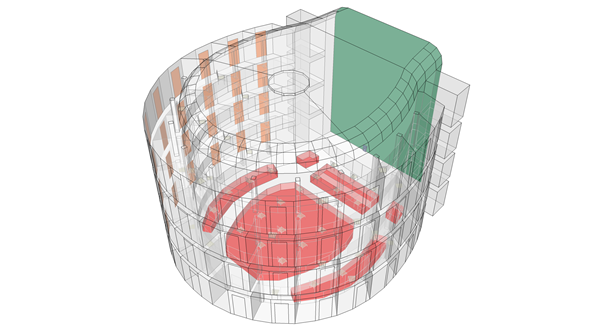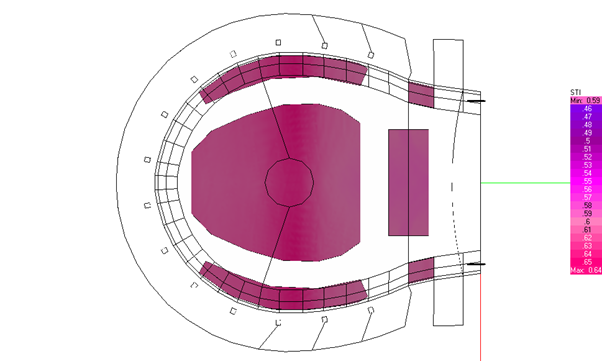
Acoustics means beauty…but why is so much ugliness still around?
Today there is a high possibility that you walk into a fancy restaurant, gym, swimming pool, museum, or sports hall and experience all kinds of acoustical defects.
I often think about how architects, designers, and even landlords do not consider acoustics. Sometimes things are planned correctly, and sometimes they aren’t, but occasionally you get lucky. Often an acoustician is hired only when the problem is so clearly felt that it is impossible to ignore.
I speak of myself, but I have heard similar stories among colleagues. I seldom get called during the early design stage of auditoriums, theaters, houses, offices, and schools…my phone does ring later. It’s when things do not go as planned in these spaces, when the reverberation is too high, and there are echoes or unbearable noises.
Among my colleagues, I hear individuals blaming the architects who do not know or even care about acoustics. This is sad and partly true, but it is not enough to explain the lack of attention in acoustics design. A possible explanation and, I think, the main problem is that we cannot see sound. You might accept this as the obvious, just like we cannot hear a picture or touch a smell. In our modern, “visually biased” world, this represents a major flaw.
The visual architectural aspects of a building can be seen and experienced by visiting a place but also indirectly by looking at a picture in a book or watching a video. To experience the acoustics of a space instead, we need to meet two standards: (1) we must be there, and (2) we also need to interact with the space. A space’s acoustics comes alive through interaction…let me elaborate on that.
To experience “visually,” you do not usually need to cast light on the scene. The light is usually provided naturally by the sun or artificially by light sources. The acoustical experience is different. Without a source, there is no sound or interaction and no contributions to the sound from the space. Sometimes the sound is our voice, and other times it is a musical instrument, often a loudspeaker. Without sounds, we are in the dark, “visually speaking.” This is the simplest explanation of why less care is given to the acoustical qualities of designing a space, or at least in relationship to others…we lack experience.
You can object that audio recordings have been available since Edison’s cylinder, and there is the possibility of experiencing sounds without being physically in a space. Nowadays, there are also means to acquire the acoustical response of a space in 3D and virtually experience the acoustics of a space (eg. CAD acoustical modeling software shown in Figure 1 below).

Still, these tools are usually not accessible to the wider public and are used at the prerogative of researchers. This is nothing compared to the impact and ease of looking at photos or other digital visual representations available. In this respect, I found very helpful acoustical simulations to predict the acoustics and to turn acoustical parameters into pictures that can be shared with architects and colleagues (eg. Figure 1 and 2). While these are merely very simplified representations of the phenomena, they are invaluable in showing how the acoustics of a space develops, pointing out possible design flaws and design improvements.
On the other hand, I think architectural acoustic is much simpler than usually thought. Among acousticians, I often see a tendency to hold elite perspectives and communicate in an overly complex way, using more or less elaborate theories. I am still considering the science behind acoustics, which has made enormous progress since the last century. Today we have a sound (no pun intended) understanding of how sounds are created and propagated, and the mechanism of our perception is very well understood.

Let’s put it clearly: we are way ahead of our Greek ancestors, and the myth of the lost “perfect acoustics” of ancient Greek theaters is … a myth. I am proposing here a different “point of view.” The role of the acoustician is to make architects “see” the impact of the acoustics on design choices and to avoid errors that might impair the usability of a space. Consider the internet memes on “construction fails,” where you can look at videos or pictures of a flight of stairs that ends on a wall or two sides of a bridge offset by several meters. The acoustical fails; while they cannot be seen, they are rather heard.
I think the main task an acoustician should pursue is to work alongside architects and prevent that from happening, using all available tools. We should let others see what is going to be heard. While acoustics are about beauty, so is architecture.
Good architecture, the one with the capital “A,” should always go together with good acoustics.
About the author: Daniele Ponteggia graduated in Electronic Engineering from the University of Perugia in 2001. Since then he has been working as a freelancer in the professional audio field. His main interests include room acoustics and loudspeaker measurements, computer aided room acoustics and sound systems simulations. As an AES member he presented several papers on room acoustics and related topics at conventions in Europe and USA. He is also a double bass player and enjoys playing live music.

